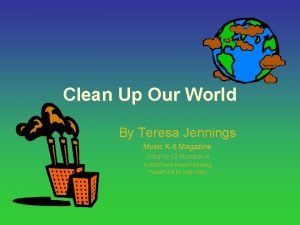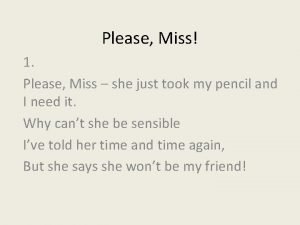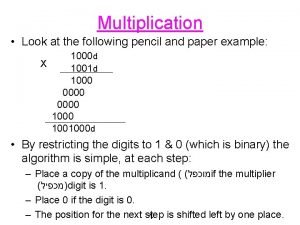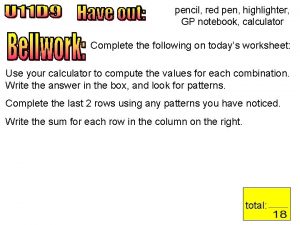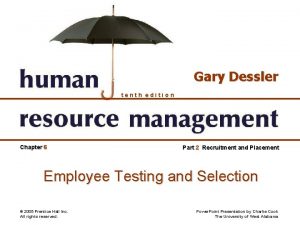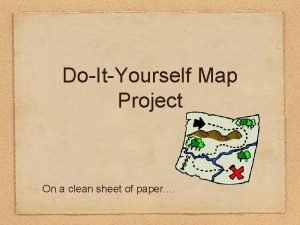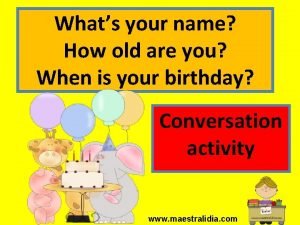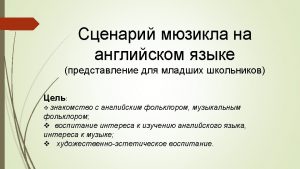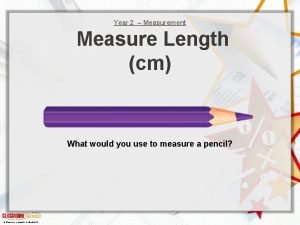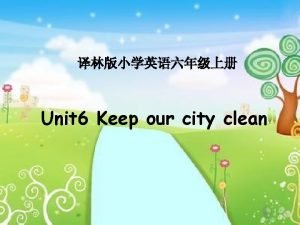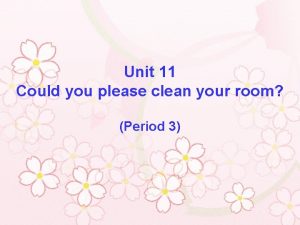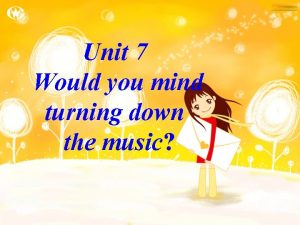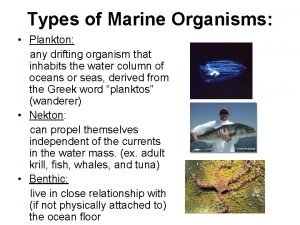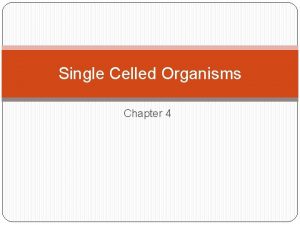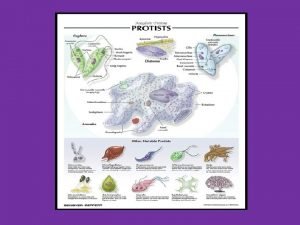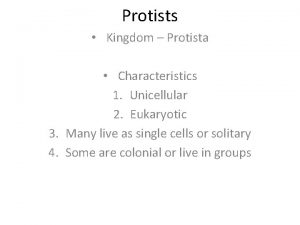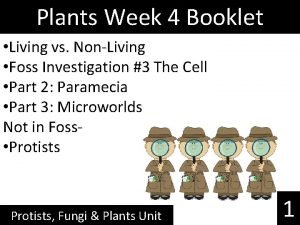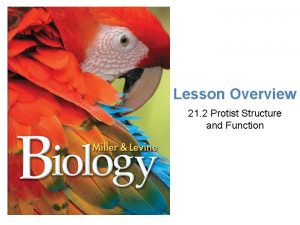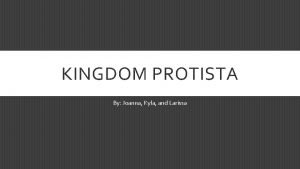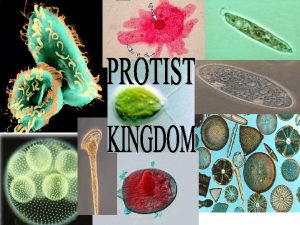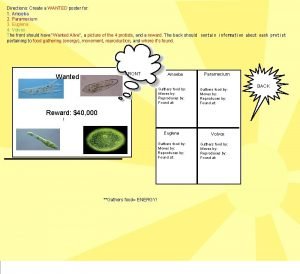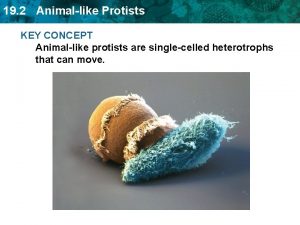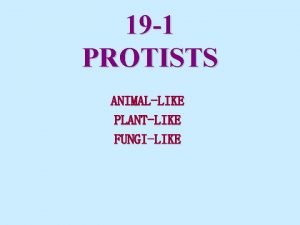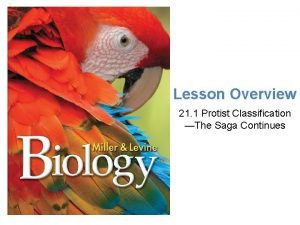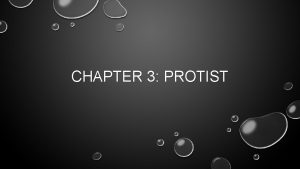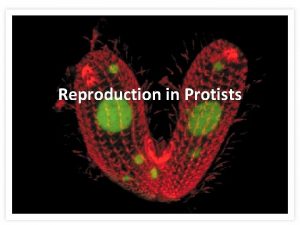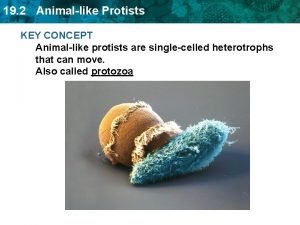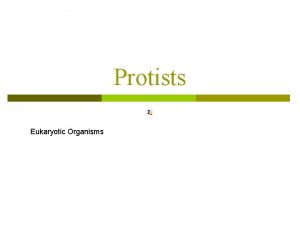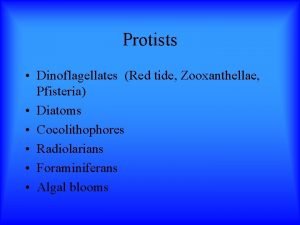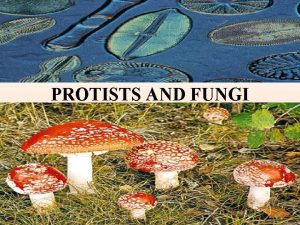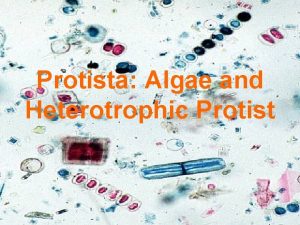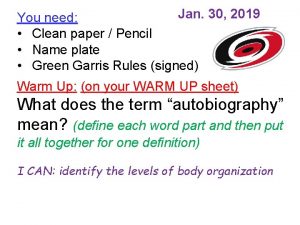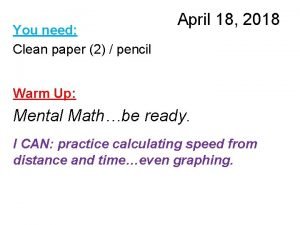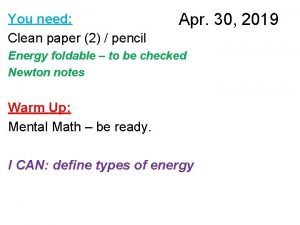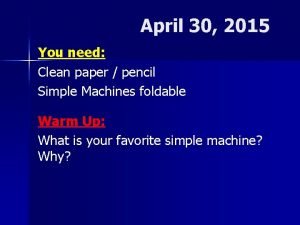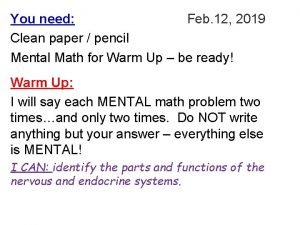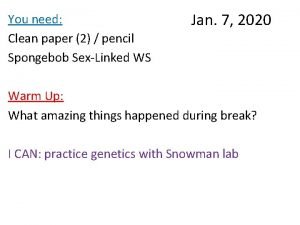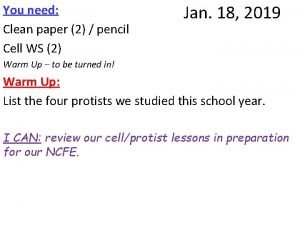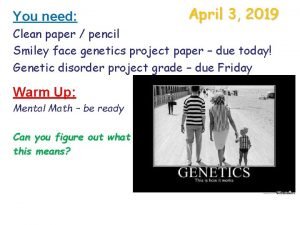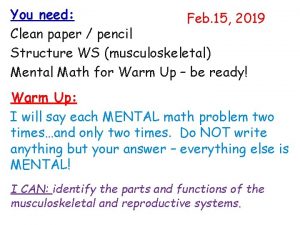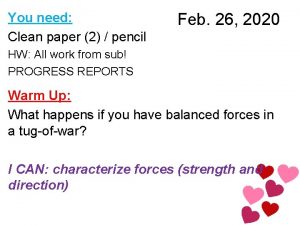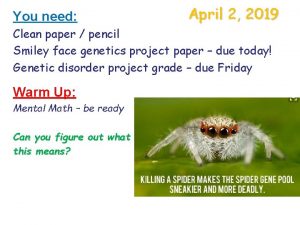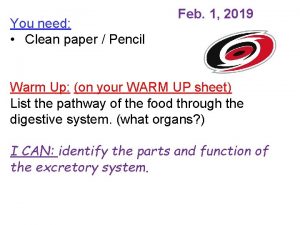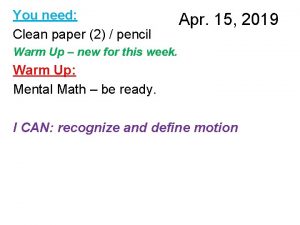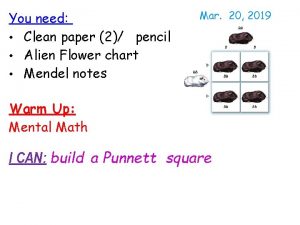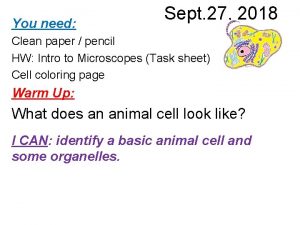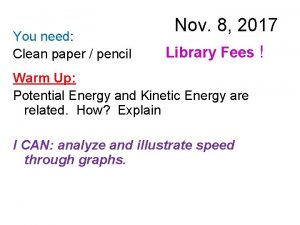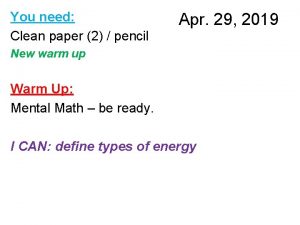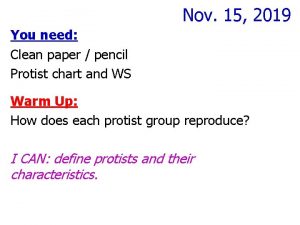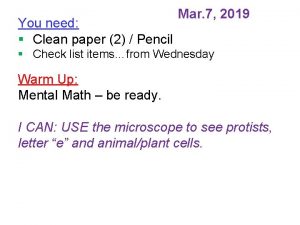You need Clean paper pencil Protist chart Old
















































- Slides: 48

You need: Clean paper / pencil Protist chart Old warm up to turn in Nov. 13, 2019 Warm Up: Which protist(s) uses chloroplast? Why do you think so? I CAN: define protists and their characteristics.

Review -Spontaneous Generation -Cell theory (Schleiden, Schwann, Virchow) -Cells – Robert Hooke -”Animal-cules” – Anton van Leeuwenhoek

Compound Microscope 2. Body Tube – gives distance between eyepiece and objective. 1. Eye Piece or Ocular – lens closest to the eye. 3. Nose Piece – holds the objectives. 5. Objective lenses – lens closest to the slide. 7. Stage clips – Holds the slide in place. 9. Diaphragm / IRIS – Controls the amount of light. 11. Light – Shines light through the slide, lens, tube. 4. Arm – holds the tube and lenses. 6. Stage – platform for the slides. 8. Coarse Adjustment knob – Moves stage up/down (to focus). 10. Fine Adjustment knob – Moves stage up/down slightly 12. Base – Holds up the entire microscope.

MRS. NERG-C The list of characteristics something MUST have to be considered LIVING…! Movement Respiration Sensory Nutrients (6) Excretion Reproduction So if cells are helping to do so many different jobs (movement, Growth respiration, etc)…are they all alike? Cells

CELLS

A B G H C I D J K L E F

A F B G H C I J D K E L

City jobs Gate/wall around the city l City hall / government building l Mayor n. Waste management l City parks n. Storage facility l Building company l Power Plant (factory) n. Gate keeper / guard l n. Solar energy farm n. Transportation dept. n. Post office

Cells PROKARYOTIC and Has organelles, but they are not membrane-bound (kinda messy) Bacteria Protists EUKARYOTIC Has organelles that ARE membranebound (more neat and contained) Plants Animals

Freebie

Lysosome Freebie Nucleus Golgi body Endoplasmic Reticulum Cell membrane Freebie Ribosome Freebie Cytoplasm Mitochondria

Freebie

Freebie Vacuole Cytoplasm Cell membrane Cell wall Freebie Endoplasmic reticulum Ribosomes Freebie Nucleus Mitochondria Freebie Chloroplast Golgi body

Cell membrane wall Ribosomes Endoplasmic Reticulum Mitochondria oplasm sosome Chloroplast Chromosomes Golgi body Post Office Nucleus Nuclear membrane Vacuole

Protists… Euglena, Amoeba, Paramecium, and Volvox

Protists…Animal? Plant? Fungus? Protists are a mix of organisms that don’t exactly fit into the animal, plant, or fungus kingdoms…and sort of fits into all of them! eukaryotes Protists are _________ - which means they have a nucleus and other membrane bound organelles. The other category would be prokaryotic. What are we?

Protists Uni-cellular __________ - one celled organisms. v Some have animal – like qualities Protozoa (_______ means “first animal” in Greek) v Some have plant-like qualities like Chlorophyll to use in photosynthesis ________ v Some are like fungi

Protists – finding food l Those who can feed themselves with photosynthesis are called Autotrophs ________ l Those who must find food in the environment around them (or move to find food) are called Heterotrophs ____________.

Google classroom 1. 2. 3. 4. 5. Log into the computer using your normal school log in. Go to the Carrington website and find “departments” Find the Hornets team page. Click on Ms. Garris’s science homework page (top right) Use the links from Ms. Garris’s page only!


Amoeba

Protists - locomotion l Some use a fake foot that they ooze outward to move, its called a … _________ Pseudopod One example is the Amoeba ___________

Amoeba Contractile vacuole Pseudopod Cytoplasm Cell membrane Food vacuole Nucleus

Amoeba 1. Cytoplasm 4. Nucleus 5. Pseudopod 2. Cell membrane 3. Food vacuole 6. Contractile vacuole

Amoeba Locomotion: Reproduction: Metabolism:

Paramecium

Protists - locomotion l Some have small, hair-like structures that come out of the membrane all over the organism… _________ Cilia One example is the Paramecium ___________

Paramecium micronucleus Macronucleus Oral groove Contractile vacuole Food vacuole Cell membrane Anal pore cilia

Paramecium 1. cilia 2. Oral groove 3. micronucleus 4. Cell membrane 5. Contractile vacuole 6. Food vacuole 7. Macronucleus 8. Anal pore

Paramecium Locomotion: Reproduction: Metabolism:

Euglena

Protists - locomotion l Some use a whip-like tail known as a __________ Flagellum One example of this is the Euglena _________

Euglena Contractile vacuole Flagella Nucleus Cytoplasm Eye spot Cell membrane Chloroplast

Euglena 1. Flagella 5. Nucleus 6. Chloroplast 2. Eye spot 7. Cytoplasm 3. Contractile vacuole 4. Cell membrane

Euglena Locomotion: Reproduction: Metabolism:

Volvox

Protists - locomotion l Some work with each other – combining flagella and teamwork… One example is the Volvox ___________

Volvox Daughter colony Eyespot Colony Flagella Cell membrane Chloroplast Nucleus

Volvox 1. Colony 3. Flagella 4. Cell membrane 5. Nucleus 2. Daughter colony 6. Eyespot 7. Chloroplast

Volvox Locomotion: Reproduction: Metabolism:

Amoeba Some use a fake foot that they ooze outward to Pseudopod move, its called a … _________ l Single celled or __________ Uni-cellular l They must find food in the environment so they are Heterotrophs ________________ Fission l They reproduce through _______ which means they simply split into two cells. l Amoeba Feeds! Youtube link

Paramecium Some have small, hair-like structures that come out of the membrane all over the Cilia organism… _________ Uni-cellular l Single-celled or ___________ l Collect food from the environment so they Heterotrophs must be ___________ l Reproduce through Asexual means most often, but sexual ____________ l reproduction is possible, too Amazing Microscopic HD Video! Paramecium Feeding!

Euglena Some use a whip-like tail known as a Flagellum __________ Uni-cellular l Single celled or ___________ l Can either use photosynthesis OR collect food from the environment so a ________ Heterotroph l Reproduces through ___________ Fission l Euglena EUGLENA

Volvox Some work with each other – combining flagella and teamwork… l Volvox is actually many cells but each is an individual organism – they simply live together in a colony for the ease of life. l Contain chlorophyll so must be ________ but Plant-like can also collect NUTRIENTS from the environment so considered both Auto and heterotroph ________________ l

Volvox • • Each of the cells have two flagella and they must coordinate them to cause motion for the entire colony. They have a red “eye” spot that can help determine light. They work together but seem to have poles (so they know forward and back. The volvox colony will reproduce new cells through asexual reproduction, but also has the ability to go to sexual reproduction so two separate colonies would be needed. n. Volvox Dances!

All of our protists…Review at this site! • http: //www. harcourtschool. com/activity/science_up_close/ 602/deploy/interface. html

Makes food from sunlight Outer most part of plant cell. Road (smooth) Road (rough) Gel surrounding all Controls cell Storage Copies ribosomes Inner part of outer covering of plant cell. Protein factory Packaging plant Power factory

Clean up (pac-man) Outer covering of an animal cell. Storage Road (smooth) Road (rough) Gel surrounding all Centrioles = help in cell division (reproduction) Power factory Controls cell Copies ribosomes Protein factory Packaging plant
 Clean up everybody let's clean up
Clean up everybody let's clean up I miss she
I miss she How old you
How old you Multiplication of binary numbers
Multiplication of binary numbers Duotangs,paper,pencil,eraser,calculator,pens,highlighter
Duotangs,paper,pencil,eraser,calculator,pens,highlighter Paper and pencil honesty test
Paper and pencil honesty test Clean sheet of paper
Clean sheet of paper Copy the diversity card on a clean sheet of paper
Copy the diversity card on a clean sheet of paper On a clean sheet of paper draw yourself
On a clean sheet of paper draw yourself I wish you strenght
I wish you strenght Rules for speech punctuation
Rules for speech punctuation How old you
How old you Once upon a time,there
Once upon a time,there Once upon a time there lived an old man and an old woman
Once upon a time there lived an old man and an old woman Family
Family Year 2 measuring in cm
Year 2 measuring in cm How do you keep your city clean for class 2
How do you keep your city clean for class 2 Please clean your own room
Please clean your own room Would you mind not smoking
Would you mind not smoking Please clean the room before you live
Please clean the room before you live Please clean the room before you live
Please clean the room before you live Please clean your room before we leave for school
Please clean your room before we leave for school Is phytoplankton a protist
Is phytoplankton a protist Single cell organisms
Single cell organisms Single celled protist
Single celled protist Kingdom protista characteristics
Kingdom protista characteristics Is euglena living or nonliving
Is euglena living or nonliving Protista phylum
Protista phylum Protist structure
Protist structure Protists unicellular or multicellular
Protists unicellular or multicellular Structure of protists
Structure of protists Protists brainpop quiz answers
Protists brainpop quiz answers Protists have nucleus
Protists have nucleus Organelle wanted poster
Organelle wanted poster Animallike
Animallike Pyrrophyta
Pyrrophyta Protist conjugation
Protist conjugation Unikonta under microscope
Unikonta under microscope Diff between prokaryotes and eukaryotes
Diff between prokaryotes and eukaryotes Asexual reproduction in protists
Asexual reproduction in protists Colonial flagellated protist
Colonial flagellated protist Bacteria wanted poster
Bacteria wanted poster Protists
Protists Protist
Protist Euglena amoeba paramecium volvox
Euglena amoeba paramecium volvox Red tide diatoms
Red tide diatoms Protist
Protist Dinoflagellates characteristics
Dinoflagellates characteristics Crytophyta
Crytophyta
